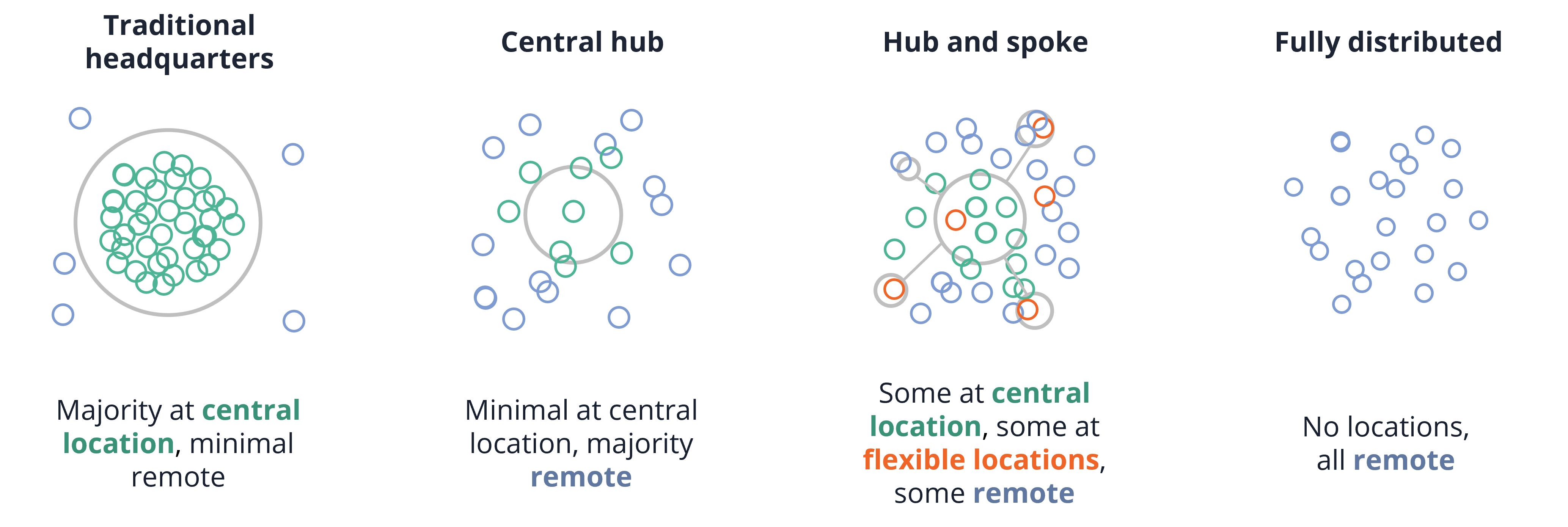Réinitialisation. Prêt. Partez!

Un résumé de notre récente présentation sur la course à la transformation et aux nouvelles réalités du milieu de travail.

A summary of our recent presentation on the race to transform and meet new workplace realities.
The global pandemic radically shook up how we all think about the workplace.
For many, it brought forward different ways of thinking about work, removed some stigmas around remote and work from home policies, and made us all take a moment to pause and reflect on what we want and need from a workplace to feel happy and fulfilled.
These disruptions and evolutions have expedited creation of new processes and concepts for businesses of all shapes and sizes. And one thing is becoming crystal clear: there’s no going back.
Your employees crave a different experience now – so what should you do about it?
What trends are rising to the forefront, how are companies responding, and what does your company need to know to remain competitive both in the market and in the war for talent?
We recently shared answers to these questions and more with clients in an event called Ready. Reset. Go.: the race to transform to new workplace realities, led by Avison Young and our network of trusted experts.
Below, explore key takeaways from this dynamic and game-changing conversation (or scroll to the very bottom to watch a video of the entire presentation.)
Here’s what we’ve learned:
Remote work actually works, and employee flexibility aids performance.
But there can be negatives to not being in the office, too.
Return to office rates are varying based on location. But across all markets, rates of return much lower than anticipated.
Cities across North America have been substantially impacted by the pandemic, and it shows in return to office numbers.
And return to office rates vary even further when you begin to break the numbers down by sector.
Explore the latest insights across sectors through Avison Young’s real-time bookmarkable tool: The Vitality Index.
Employees are seeking the total experience – both physical and virtual. As workers adapt to working from places and spaces outside of the office, they are also becoming increasingly vocal about their wants and desires to make new realities work for them.
Workplaces must adapt to meet new needs, or risk losing talent to other organizations who will evolve with the times.
What could it look like to rise to their demands and futureproof your space for tomorrow and beyond?
Consider the following:
- Take a step back and evaluate the make-up of your workforce. Different generations, personality types and archetypes require different things from the workplace and right now you could have upwards of 5 generations, and countless personality and archetypes all present in your space. Are you creating an office that truly meets the varied needs of your workforce, or just a few key groups? How could you accommodate more?
- Does your office methodology combine business needs and human experience with real estate? Is your space strategy focused on a people-first agenda? What is your strategy for both physical and virtual experience?
- How do your spaces engage employees in a meaningful way to encourage and foster increased connection and productivity? What are the right place and space types to meet your office’s needs?
Making office spaces more human-centric and people-first might mean rethinking your HQ models and traditionally rigid structures for more flexible solutions and offerings.

Think less about the office as the place to do the work and consider what tasks need to be completed. From here, you might find that a variety of intentionally designed spaces built for specific collaboration or task-based needs fosters more creativity and connection.
Prioritize plans built around swift reaction. From our lens, markets are already responding quickly to changing needs.
Current office market dynamics show robust recovery in employment, office markets looking tenant-friendly, leasing volumes low as companies decide what they want from their places and spaces, and, accordingly, leasing incentives on the rise.
Investments are showing strong in suburban markets, aligning to moves away from city HQ models toward hub and spoke or suburban HQ models to move where company employees have migrated.
Access to flexibility, work locations that match work type, and those that focus on wellness and sustainability as a cornerstone, are winning the day.
How various sectors are responding – hear from our panel that spans across the public, investor and asset management, entertainment, and technology sectors about the impact pandemic policies have had on their prospective businesses and what they see as they look ahead toward the future:
Having taken this all in -- are you seeing similar trends to these where you sit?
Are you curious for more information?
Or want to start a conversation around how your office could evolve to meet the needs of the workplace of the future?
Let’s chat.
Sheila Botting, Principal & President Americas, Professional Services
Rick Ybarra, Principal, Consulting Services
Nick Axford, Principal, Global Director of Insight
Anna Scally, Director, Workplace Solutions
Related resources:
X Factor: Powered by people – workplace transformation after Covid
10 trends for a zero carbon world
Learn more about the trends stated above in this event replay:



